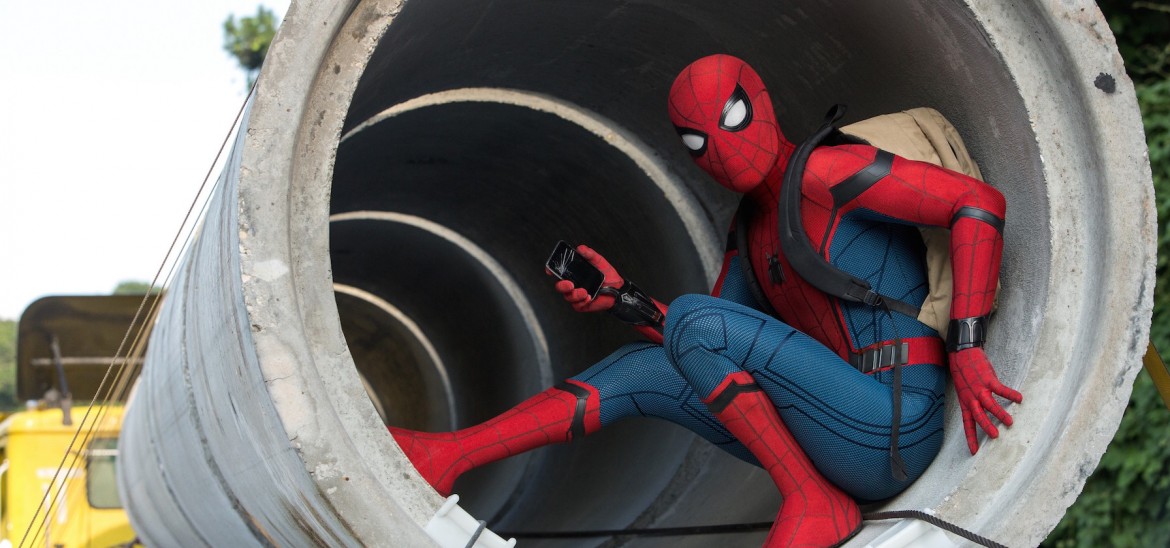Into Film Clubs
Find out everything you need to know about starting an Into Film Club.



Swinging back into cinemas is everybody's favourite friendly neighbourhood Spider-Man! Officially the most popular comic book character in history, Spider-Man: Homecoming is his sixth standalone film in 15 years, with Tom Holland the third actor to play the hero, after Tobey Maguire and Andrew Garfield. Following a mixed response to The Amazing Spider-Man 2, and thanks to some complicated behind-the-scenes deals around intellectual property, the character was reintroduced in 2016's Captain America: Civil War, where he teamed up with the Avengers for the first time on film. An immediate hit with audiences, there still remained the challenge of keeping his own film fresh, given that Spider-Man/Peter Parker and his origin story are both so familiar.
The answer to this problem has been to take the character back to his roots, and present a more grounded story than some of the recent films in the Marvel Cinematic Universe (MCU). The most obvious change is making the character younger than his earlier film incarnations and more in line with his age in the comic books. The Peter Parker seen here is in his second year of high-school (making him around 15) and, taking inspiration from Harry Potter, the producers plan to keep him in school for as long as possible in future films. To help with this, they have cast a younger actor than before in British star Tom Holland.
In keeping with a trend seen in films such as Jurassic World, Kong: Skull Island and Doctor Strange, the producers also hired a young, independent director: Jon Watts. Watts impressed with his immersion in modern youth culture, encyclopaedic knowledge of high school movies, and his understanding of the humour of Peter Parker, all of which were seen as equally important as the ability to direct high-octane action sequences. Although Spider-Man: Homecoming contains more than its fair share of action, it has a more relatable story than other MCU films, taking place in a recognisable world and dealing with contemporary issues.
Another distinguishing feature is the film's villain: Adrian Toomes, aka the Vulture. In the MCU, the aftermath of the Avengers' earlier battles have tended to leave their fair share of destruction. Toomes, a normal everyday guy, has built up a successful business cleaning up this mess, only to have the lucrative contract taken away from him by a Tony Stark initiative. Struggling to provide for his family, Toomes develops his Vulture alter-ego, with plans to steal Avengers technology to sell on the black market. His is a villainy that emerges from the ground-up, and circumstances that we can in some way understand and relate to. The Vulture is not seeking to take over the world - his plans are more personal, however misguided - and he enters Peter Parker's world in unexpected and low-key ways.
The casting of Michael Keaton adds meta-layers to the storytelling. Having made his name playing Batman in the Tim Burton films, and appearing as Birdman in the Oscar-winning film of the same name, Keaton is indelibly associated with superheroes. Although he is the bad guy here, his blue-collar Adrian Toomes has some similarities with billionaire Bruce Wayne: both are just men, without any inherent superpower, who build the suit and armour for their alter-egos themselves. Although they sit on opposite sides of comic book culture - one Marvel, the other DC - it is amusing to speculate how close Adrian Toomes and Bruce Wayne really are to one another.
Homecoming also functions as a traditional high-school movie. Peter has many of the concerns any teenager has: dealing with exam stress, homework overload, occasionally falling out with his friends, and navigating his first crushes. Much of the plot centres around attendance at the school dance, a defining social event fraught with anxiety, as films such as Grease, It's A Wonderful Life, American Graffiti and Back To The Future have shown us. A great deal of the film's humour - as well as the lead character's cheeky cockiness - is reminiscent of classic high-school comedies such as Ferris Bueller's Day Off. In other ways, it feels very much like the story of a modern teenager: in his spare time Peter is an amateur vlogger, desperate to capitalise on his new found (but secret) YouTube celebrity, and spending much of his time on social media. The school he attends is also notable for its diversity and progressiveness, which is a credit to the film's casting.
There are, however, a number of large set-pieces in what remains at heart an action film, including spectacular sequences at the Washington Monument and on board a New York City ferry. As always, much of the pleasure of these scenes lies in seeing Spider-Man swinging into action and hurling himself around the city through seamless wirework. In keeping with the spirit of independent filmmaking, many of these were shot on practical locations, rather than on a sound-stage. Tom Holland's background playing dancer Billy Elliot on stage in the West End also gave him the gymnastic ability to take on the stunt work himself - every action shot in the film is either Holland in the iconic Spider-Man suit himself, or performing the motion capture work for what would become the suit under CGI. Marvel fans will also notice that many of these sequences are heavily influenced by events that occur in the comics.
Young and petulant, Peter Parker learns that being a superhero is not as easy as he'd imagined. Desperate to become a full-time member of the Avengers, he is surprised to find his phone remaining silent and mentor Tony Stark becoming increasingly distant. Peter doesn't want to be the friendly neighbourhood Spider-Man - he craves the fame of the older team members. Peter must first learn to be patient and humble, but also to continue experiencing the joys of being a child - like many young heroes, it is important he doesn't grow up too fast. However, he is inevitably called upon to perform extraordinary heroics, and audiences will be left in no doubt that this is a superhero that's every bit as strong and powerful as Iron Man, Captain America, or Thor - the main difference being that he has to do his homework at the same time!
Spider-Man: Homecoming works straightforwardly as a standalone story, so audiences do not need to have seen previous MCU films to understand what is going on. In this respect, it is similar to DC's Wonder Woman, which benefitted from a story set a hundred years in the past, allowing the film to function on its own without linking in too closely with the wider shared universe. That said, like Wonder Woman, the story of Homecoming still fits into a larger whole, with numerous cameos from other MCU figures to underline the point. Events from this film will carry forward into future MCU titles, not least the forthcoming Avengers: Infinity War sequels - in which Spider-Man is likely to feature prominently - as well as a standalone sequel to Homecoming. The web-slinger is not about to stop swinging anytime soon, and he may just have finally found the place where he truly belongs.
Viewing 4 of 4 related items.

Get in touch with your article ideas for the News and Views section.